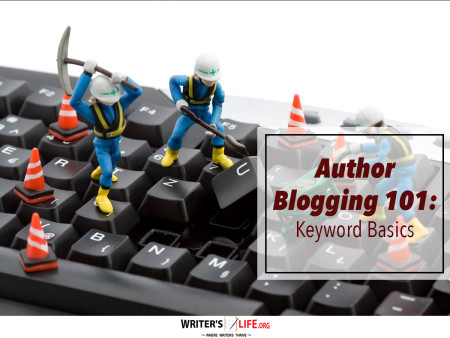- How To Tackle Jealousy In Creative Writing
- Common Submission Mistakes
- How To Stop Your Blog Becoming Boring
- The One Thing Every Successful Writer Has In Common
- How To Make Yourself Aware Of Publishing Scams
- Why Almost ALL Writers Make These Grammar Mistakes At Some Point
- 5 Tips For Authors On How To Deal With Rejection
- Top Mistakes to Avoid When Writing a Novel
- How to Avoid Common New Writer Mistakes
- 10 Mistakes New Fiction Writers Make
10 Editing Mistakes That Make Stories Feel Flat

Editing mistakes can turn a captivating story into a forgettable one, inadvertently draining the life out of your narrative. It's critical to pinpoint these pitfalls to avoid crafting stories that fall flat. Here, we'll explore 10 common editing errors that have the potential to leave your readers dull and uninspired. Don't let hard editing problems stand in the way of your storytelling prowess.
Overloading with Description: A Story Editing Pitfall
Ever heard the phrase, "less is more"? In storytelling, this couldn't be more accurate. The tendency to overwrite with excessive description is one of the most common editing errors. Instead of painting a vivid picture, redundant details can bog down the narrative, making it feel sluggish and unengaging. Aspiring to set every scene perfectly sometimes results in a flood of unnecessary information that eclipses the story's heart.
Instead, use selective, meaningful details that evoke the essence of a scene without overwhelming the reader. When you focus on crafting sentences with simple yet powerful imagery, the story’s impact is much greater. By keeping editing challenges in writing in check, you can maintain your reader’s interest and move the plot forward.
Ignoring Pacing Issues: How to Avoid Editing Mistakes
Pacing is crucial in storytelling. It’s the rhythm that guides the reader through the plot. However, mistakes in story editing often occur when the pace is uneven. If your story gallops through crucial character development or drags during high tension, readers may find it hard to stay engaged. Edit with an eye for balance, ensuring that the rhythm naturally suits the unfolding narrative. This doesn't mean every story needs to move quickly; it means each scene should feel as though it belongs precisely where it is.
Ask yourself: Does this scene need to be this detailed? Could this part be tightened to bring in more suspense? By balancing action, dialogue, and description, you can avoid dangerous editing habits that lead to a flat experience.
Lack of Character Depth: A Costly Editing Mistake
Characters are the backbone of any story. If they lack depth and complexity, your audience may struggle to form emotional connections to them. Flat story editing issues frequently arise from characters that feel more like cardboard cutouts than multi-dimensional beings. This can be one of the hardest editing problems to recognize and correct, but it’s essential for compelling storytelling.
Consider diving deeper into your characters' motivations, backgrounds, and goals. Giving them unique traits and development arcs allows readers to understand and relate to them. This is how you avoid costly editing mistakes and create a richer, more engaging narrative.
Unclear Themes: Avoiding Editing Blunders in Storytelling
Have you ever finished a book and wondered what it was trying to say? Unclear themes often result from poor editing. A story should not only entertain but also leave readers with something to think about. When theme and message are tangled or hidden, the story can feel directionless.
To combat this, identify the core themes early and ensure they shine through as your narrative unfolds. Weaving themes naturally into character choices and plot points will create a more powerful, cohesive story. Editing blunders in storytelling usually stem from neglecting this vital aspect.
Dialogue That Falls Flat: Tackling Editing Challenges in Writing
Flat dialogue can derail even the most well-crafted stories. Engaging dialogue is more than just information transfer; it's an opportunity to reveal character and move the plot along. A common mistake is using dialogue that lacks authenticity or emotion, making conversations feel forced or awkward.
Each character should have a distinct voice that reflects their background and personality. By crafting dialogue that sounds natural and character-specific, you avoid hard editing problems and let your characters breathe life into your story.
- Too much exposition can make scenes drag.
- Repetitive sentence structures can bore your readers.
- Inconsistent point of view hinders narrative flow.
- Lack of edits for passive voice can dilute story impact.
- Sloppy transitions confuse your audience.
Want to promote your book after it’s published? Check out our Book Marketing Articles.
Frequently Asked Questions About Editing Mistakes
Q: How do I identify pacing issues during editing?
A: To identify pacing issues, read your story aloud and note where the narrative slows or feels rushed. Adjust scenes for consistency and flow.
Q: What are some easy tips for improving my dialogue?
A: Focus on making dialogue sound natural and distinct for each character. Read it aloud or enlist others to provide feedback on its authenticity.
According to Wikipedia, clarity and simplicity in storytelling are vital for effective communication as they allow readers to form deeper connections with the narrative.
If you're serious about growing your author career, don't miss out on these free tools and templates built specifically for writers. Access all 7 free resources here.



























